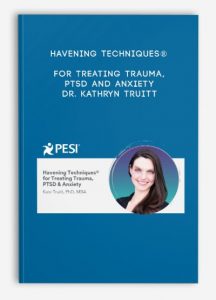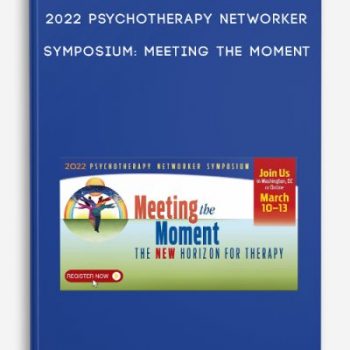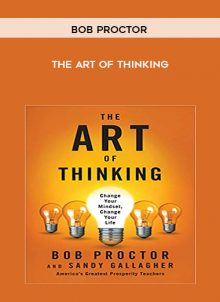
Havening Techniques® for Treating Trauma, PTSD and Anxiety – Dr. Kathryn Truitt
Description:
What do you do when a patient is hijacked by their emotional brain? When no amount of talking and thinking will unwind their cycling thoughts and ruminations?
If you treat clients who experience anxiety, trauma, depression, pain, panic or any other stress-based disorder, then no doubt you’ve had moments of feeling helpless watching a client paralyzed by their harmful core beliefs or triggers of traumatic experiences.
Wouldn’t it be great having highly effective easy-to-use tools that directly address the emotions keeping your clients stuck in painful pasts and unable to realize a brighter future?
Utilizing similar mechanisms as Eye Movement Desensitization and Reprocessing (EMDR), Havening Techniques are a new suite of neuroscience-based interventions designed for fast and effective treatment of posttraumatic stress disorder and other fear-based disorders such as anxiety, panic disorder, and phobias – whether your clients are in session, at home or on the go – whenever difficult emotions come at unexpected times!
Watch Havening Techniques Certified Trainer and Global Director of Continuing Education, Dr. Kate Truitt, for this must-see webcast and discover her secrets for creating a gentle, clientcentered approach to trauma-informed, neuroscience-based, and resiliency-focused care.
Add Havening Techniques to your toolbox and create new pathways to sustainable change in your clients’ lives.
Outline:
The Havening Techniques: userfriendly and accessible tools for trauma reprocessing
Why integrate the Havening Techniques into your clinical practice?
How trauma paralyses the treatment process
The role of the Amygdala in Trauma, PTSD and Anxiety
How touch calms and manages traumatic events and memories
Treating the traumatized brain with neuroplasticity and touch
Ethical Considerations: Boundaries, Risks and Limitation, Scope of Practice
Clinical implications for bringing the Self-Havening Touch into clinical practice
Clinical indications for when to use, or not
Review of the science, research, and limitations of the Havening Techniques
Applications of the Havening Techniques in Clinical Practice
Assessing clients for integrating Havening into treatment plans
Introducing the client to the Havening Techniques
Teaching Self-Havening for ANS regulation and at home use
Building a client centered Havening Tool kit
De-activating the amygdala in the moment
Building positive feeling states with neuroplasticity
Targeting traumatically encoded experiences from the past
Structuring the session for trauma reprocessing
Identifying the Target: Events, Feelings, Cognitions, or Somatic Encodings
The four-step model of targeted Havening
Closing the session with resource development
Building resilience and personal agency
Supporting other treatment modalities with the Havening Techniques:
Enhancing your existing clinical practice with the Havening Techniques
Special considerations for use with EMDR, CBT, IFS, and EFT
Strengthening emotional stabilization and autonomic regulation
Targeting sticky maladaptive/negative cognitions
Strengthening the Self connection
Releasing the patterns of the past to build healthy connection now
NLP online course
So what is NLP?
Firstly, NLP stands for Neuro-Linguistic Programming. Secondly neuro refers to your neurology;
Thirdly linguistic refers to language however, programming refers to how that neural language functions.
As a result,In other words, learning NLP is like learning the language of your own mind!
Moreover, NLP is the study of excellent communication–both with yourself, and with others.
It was developed by modeling excellent communicators and therapists who got results with their clients.
NLP is a set of tools and techniques, but it is so much more than that.
In conclusion, It is an attitude and a methodology of knowing how to achieve your goals and get results.













tristian –
This is Digital Download service, the course is available at Vincourse.com and Email download delivery.